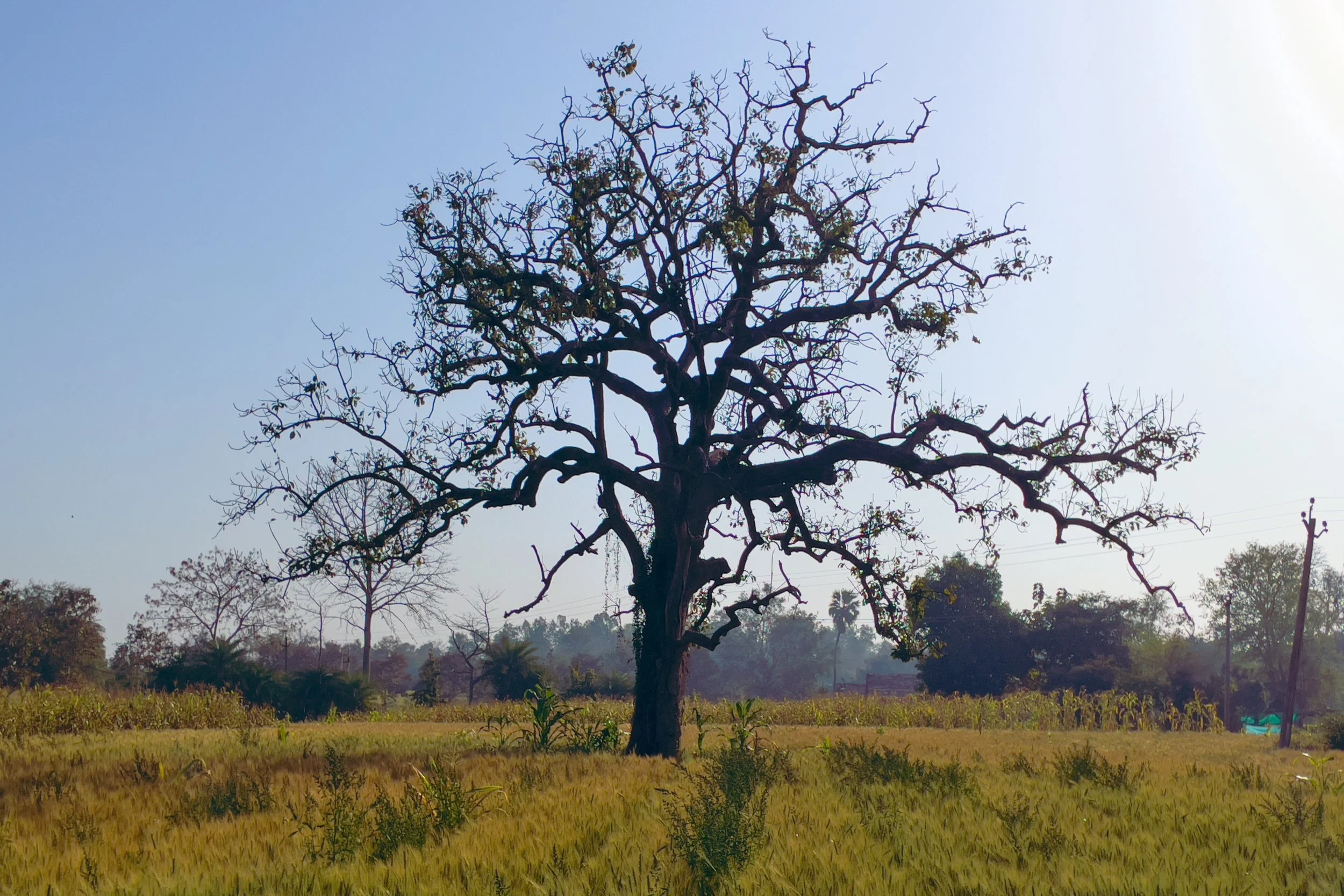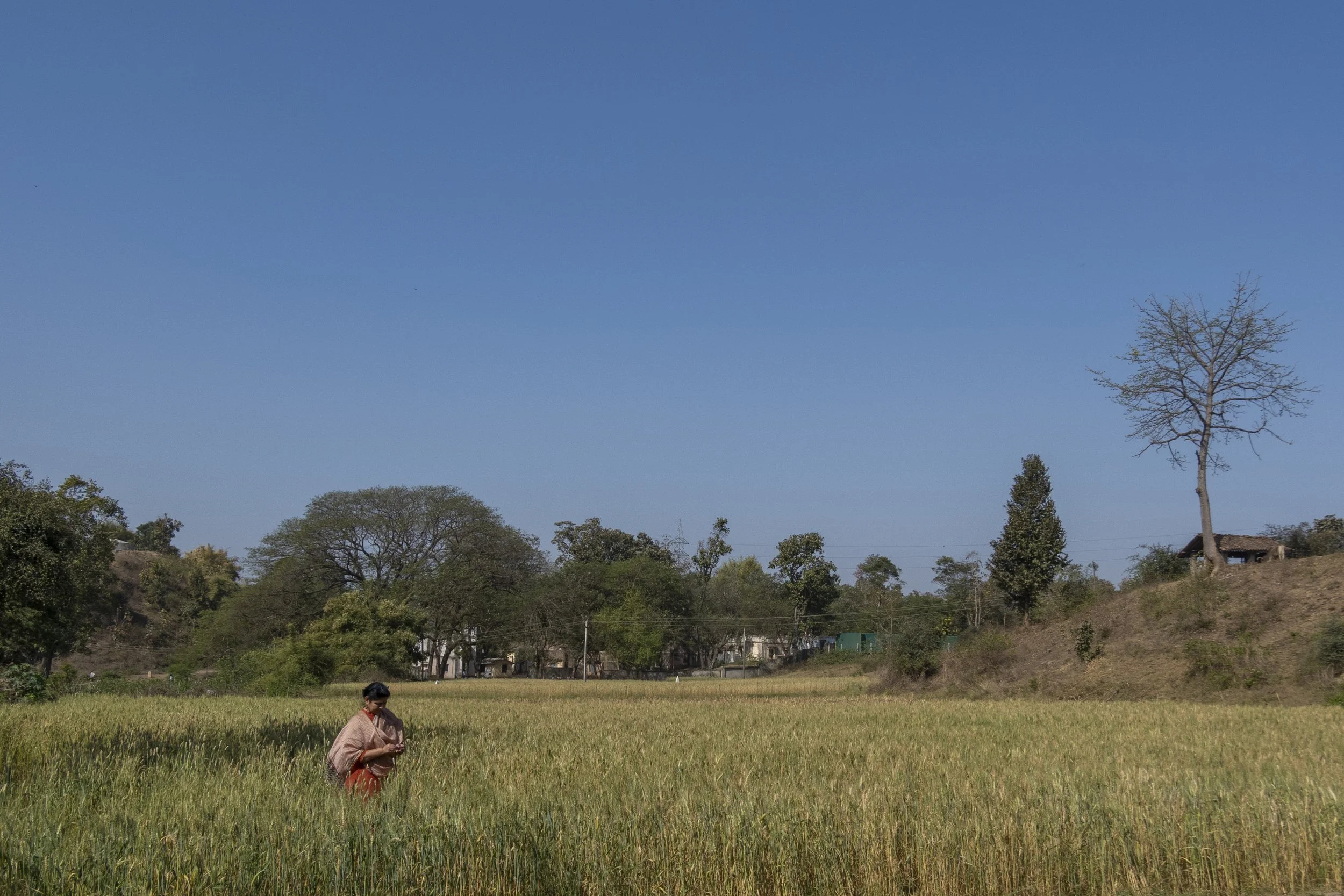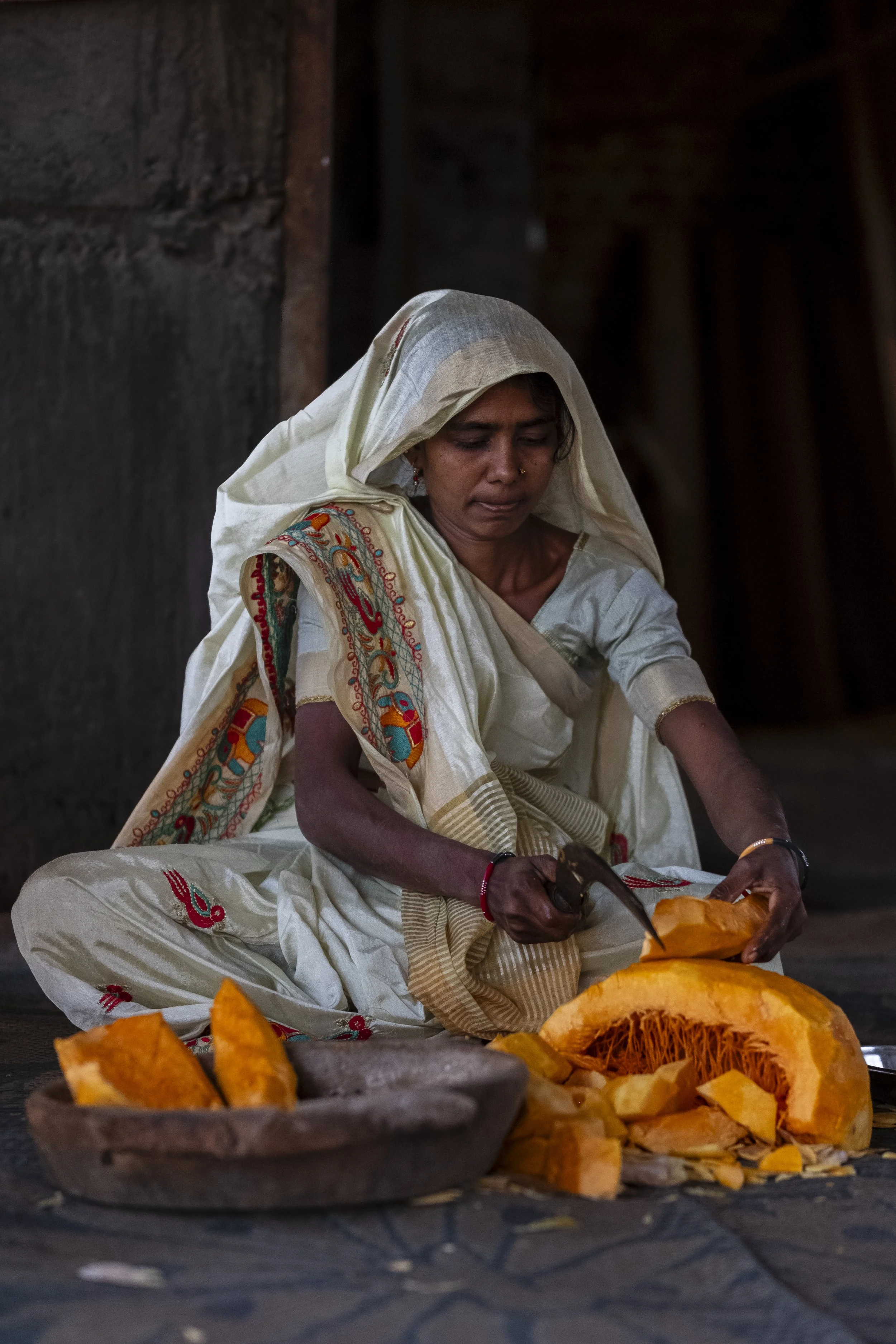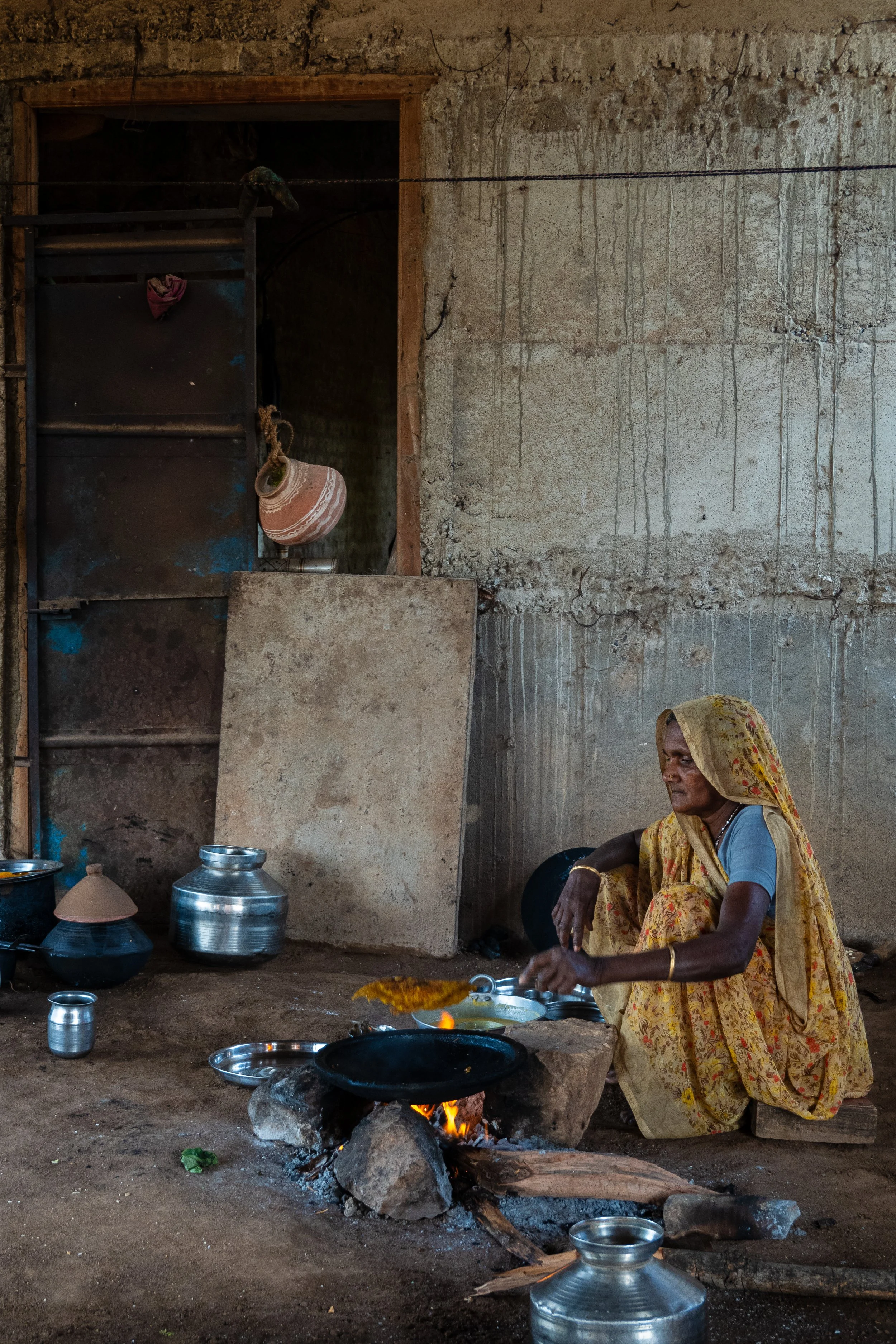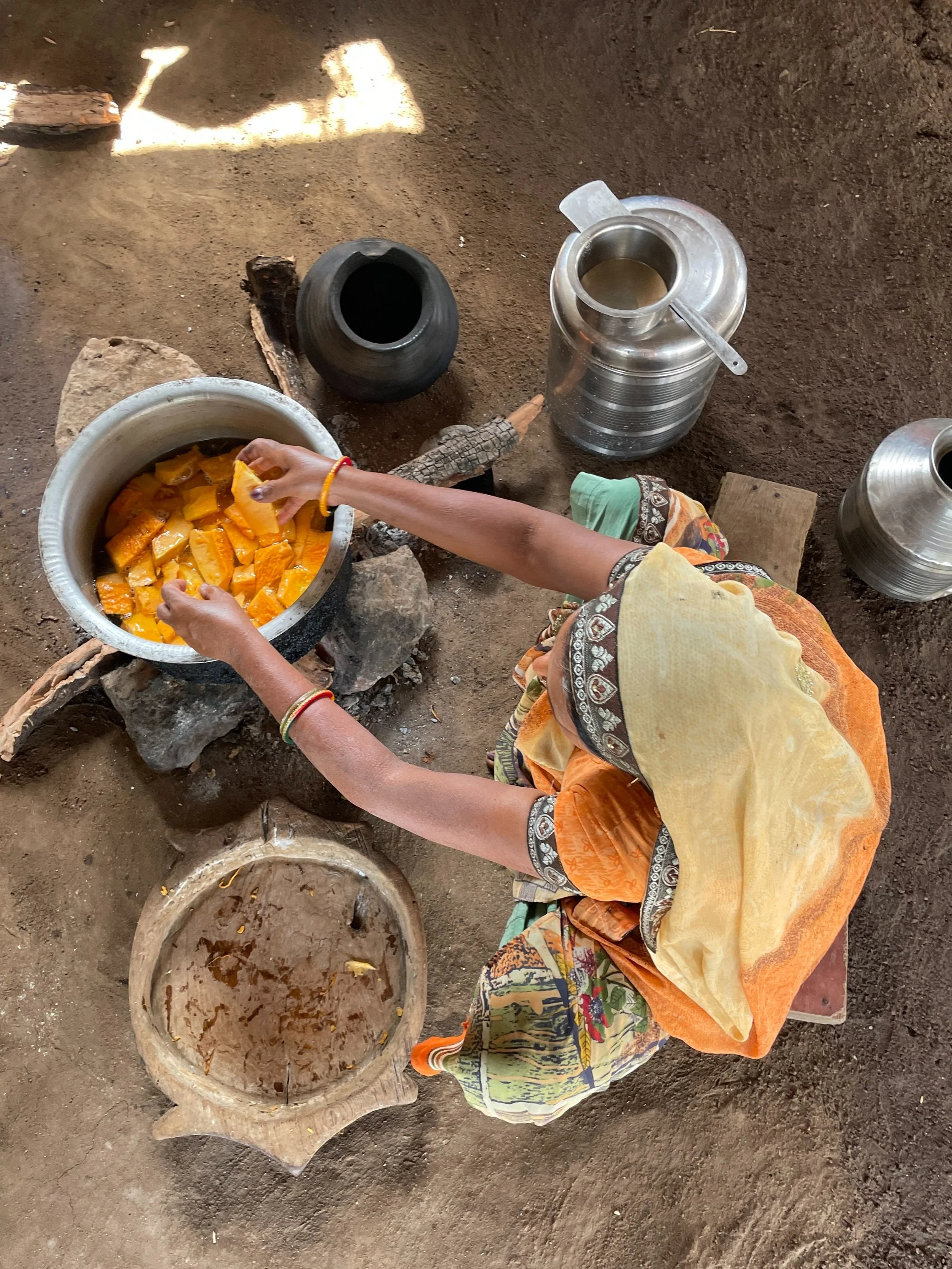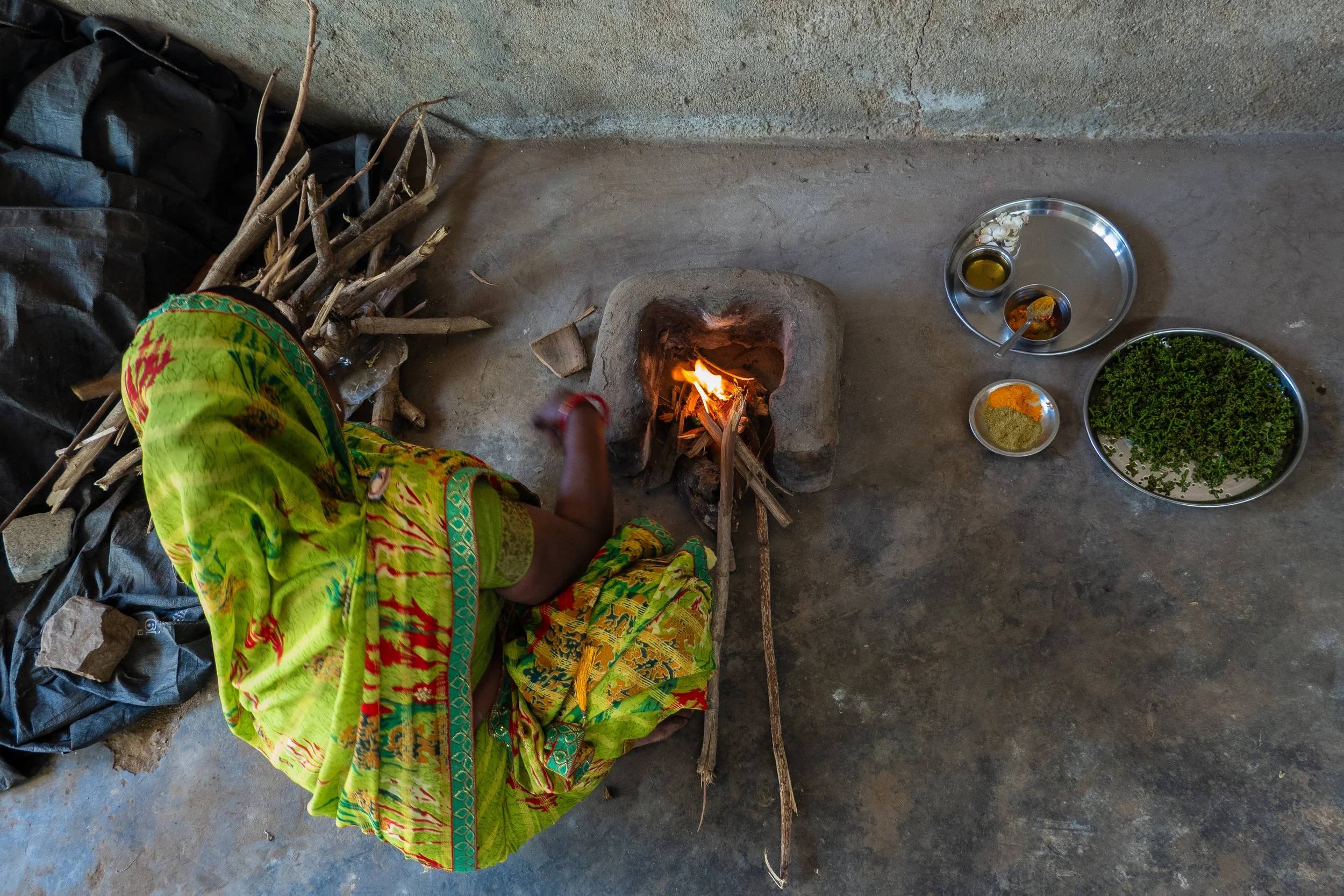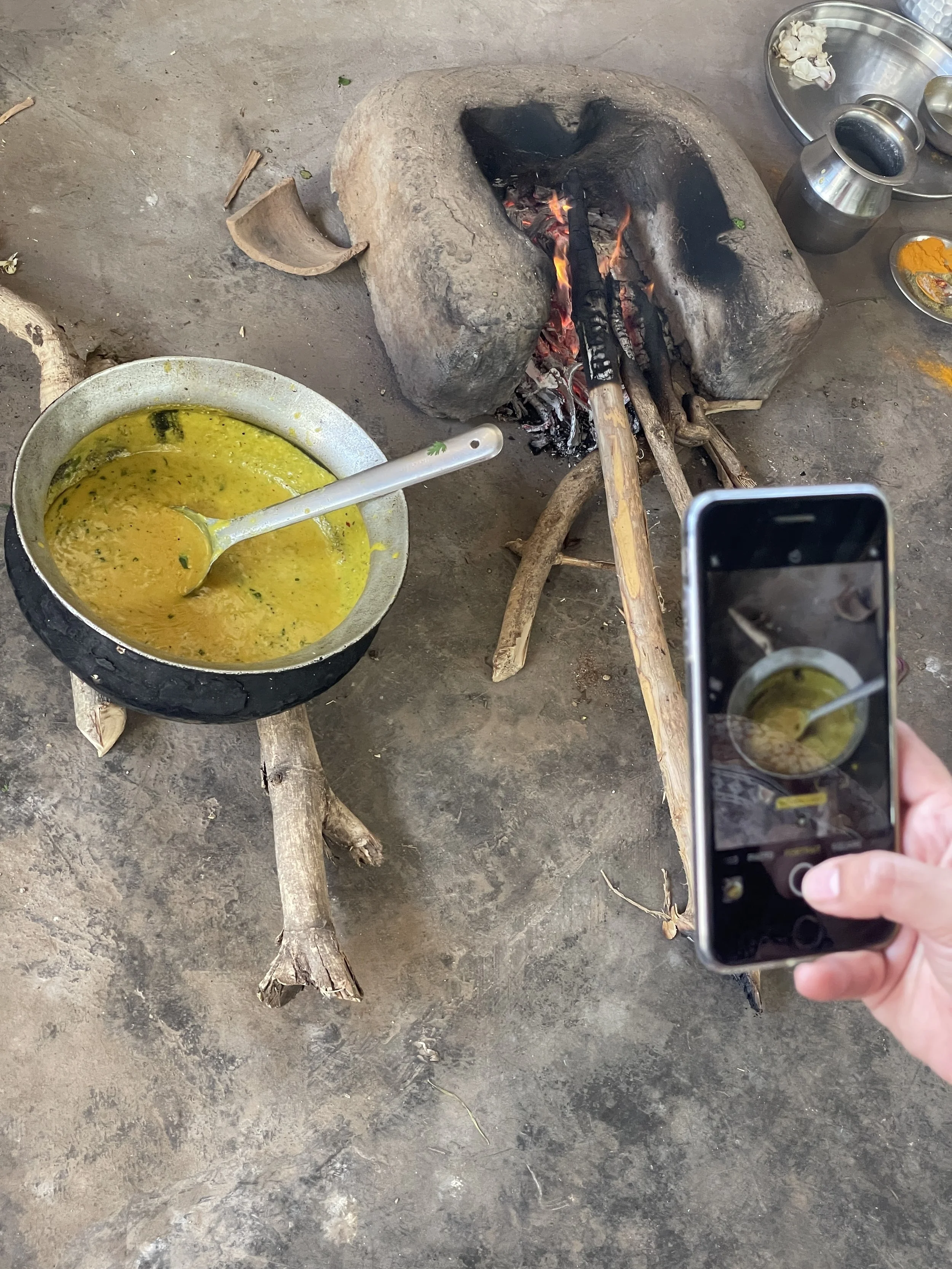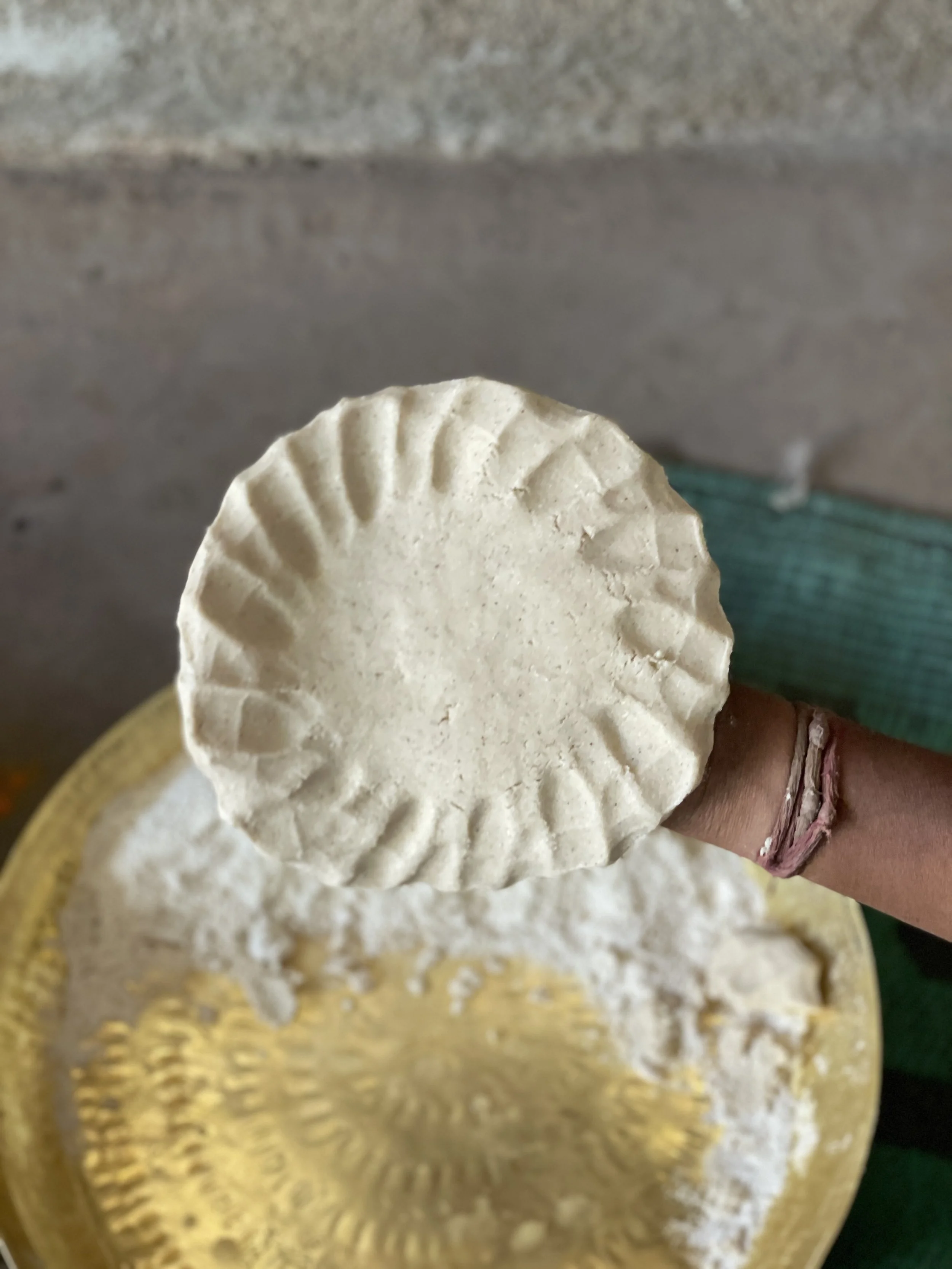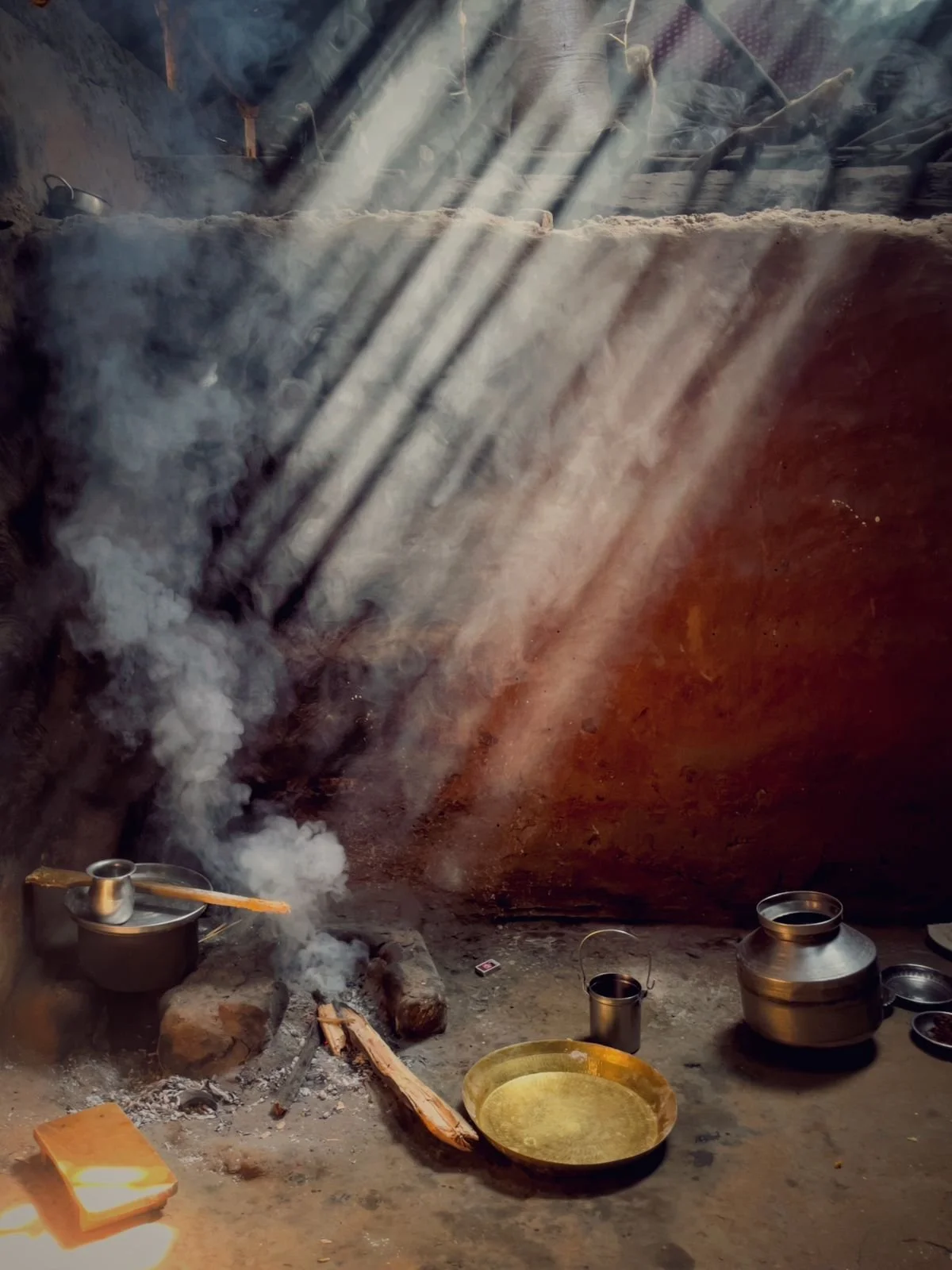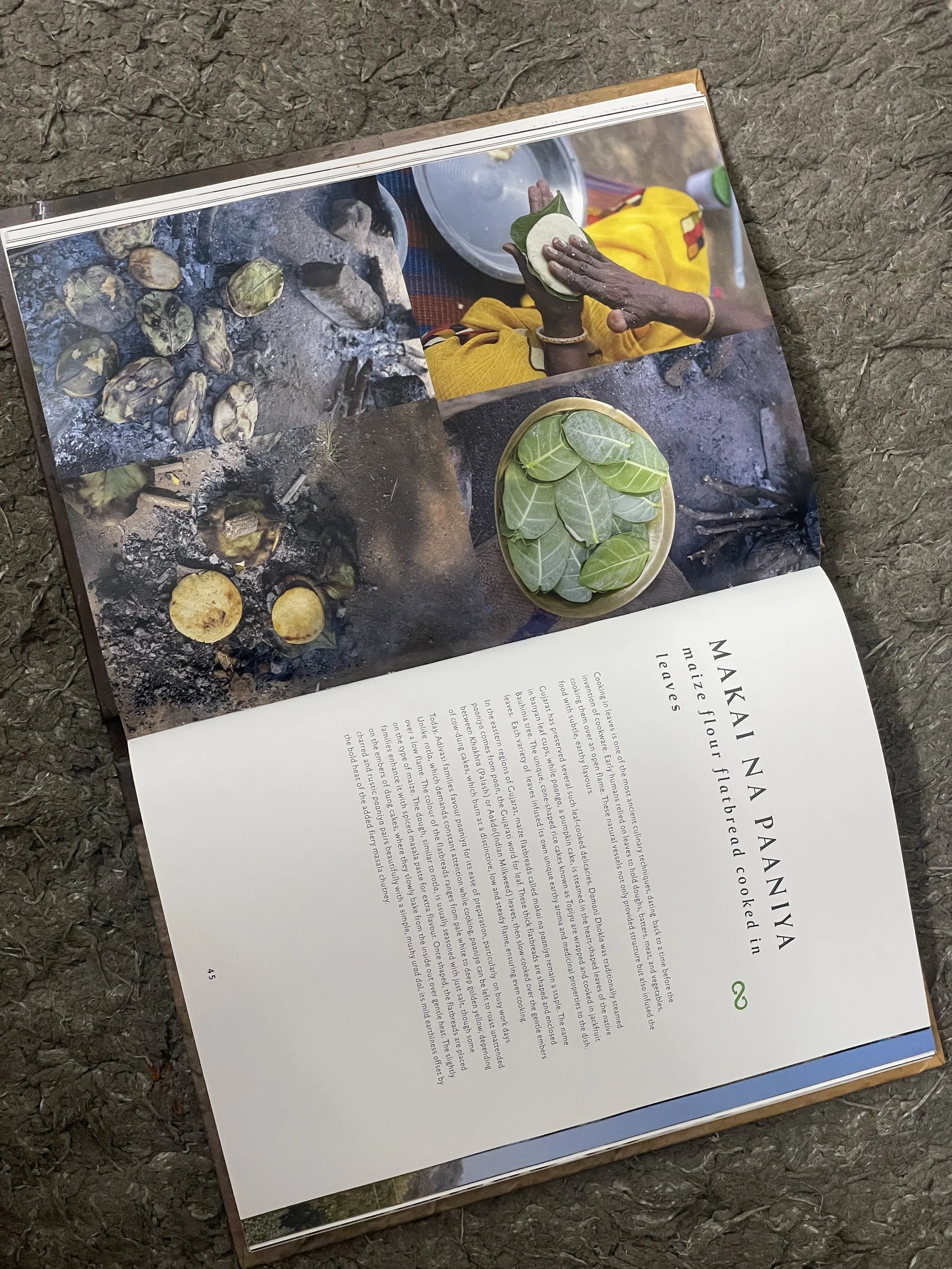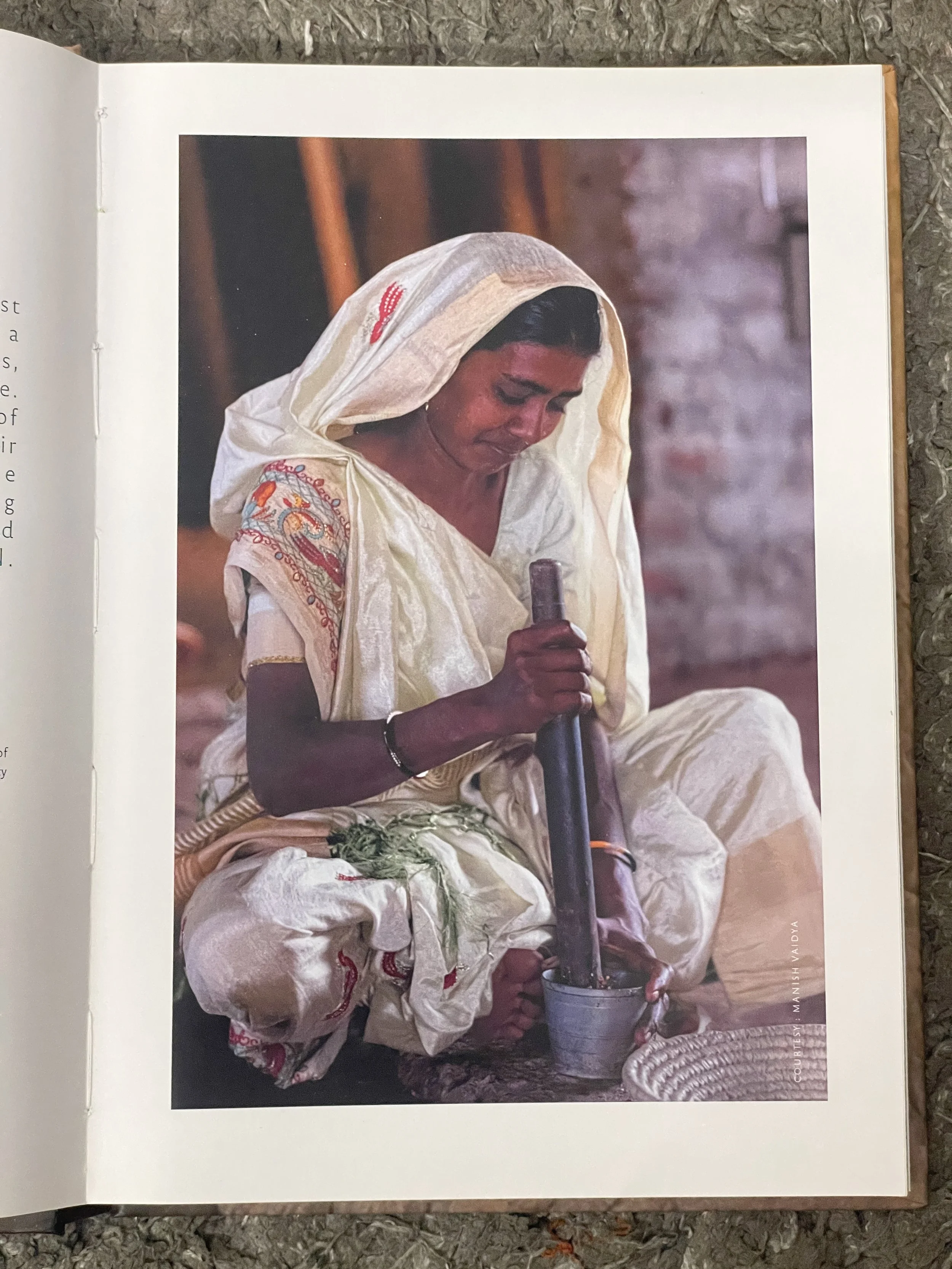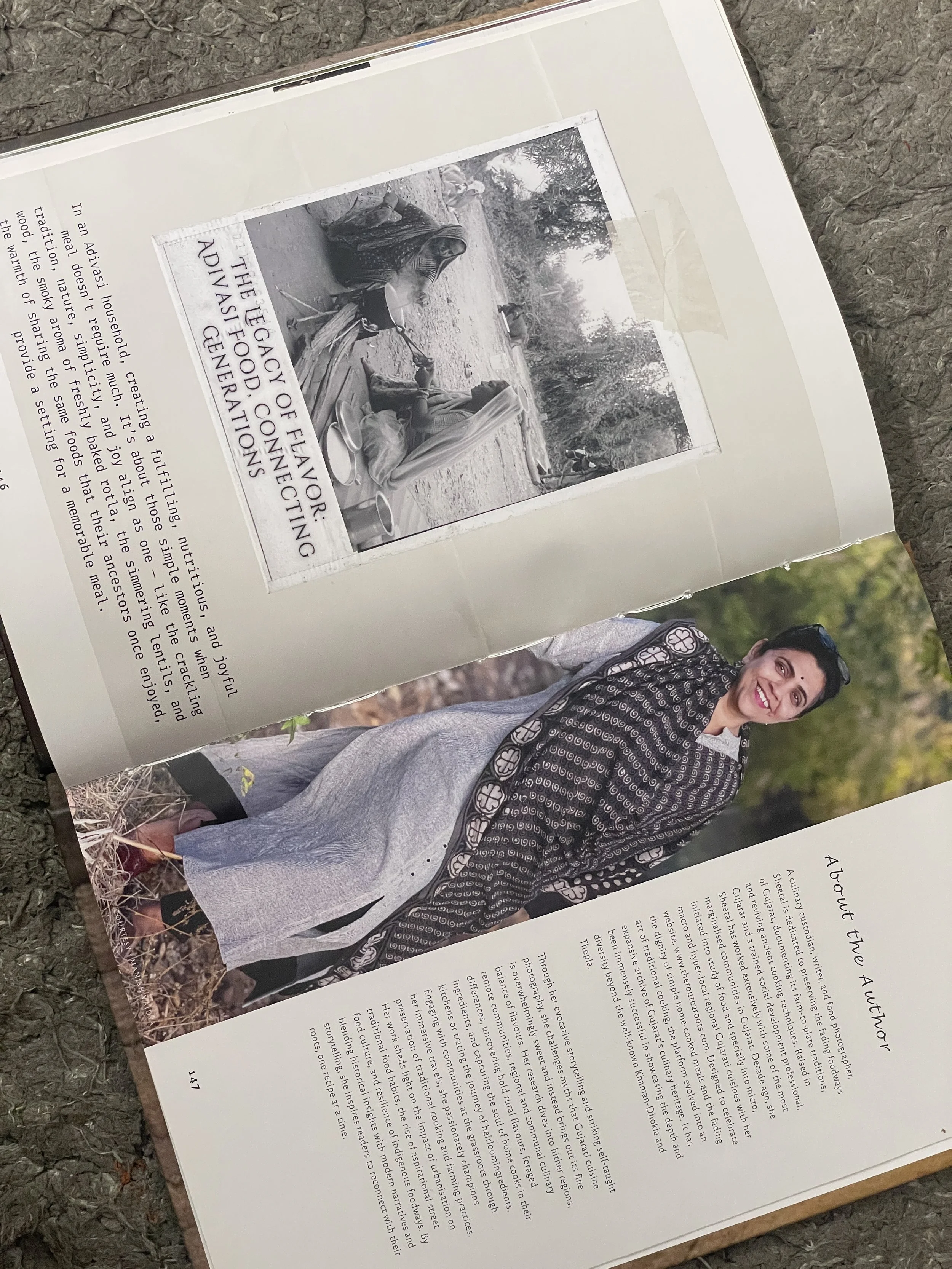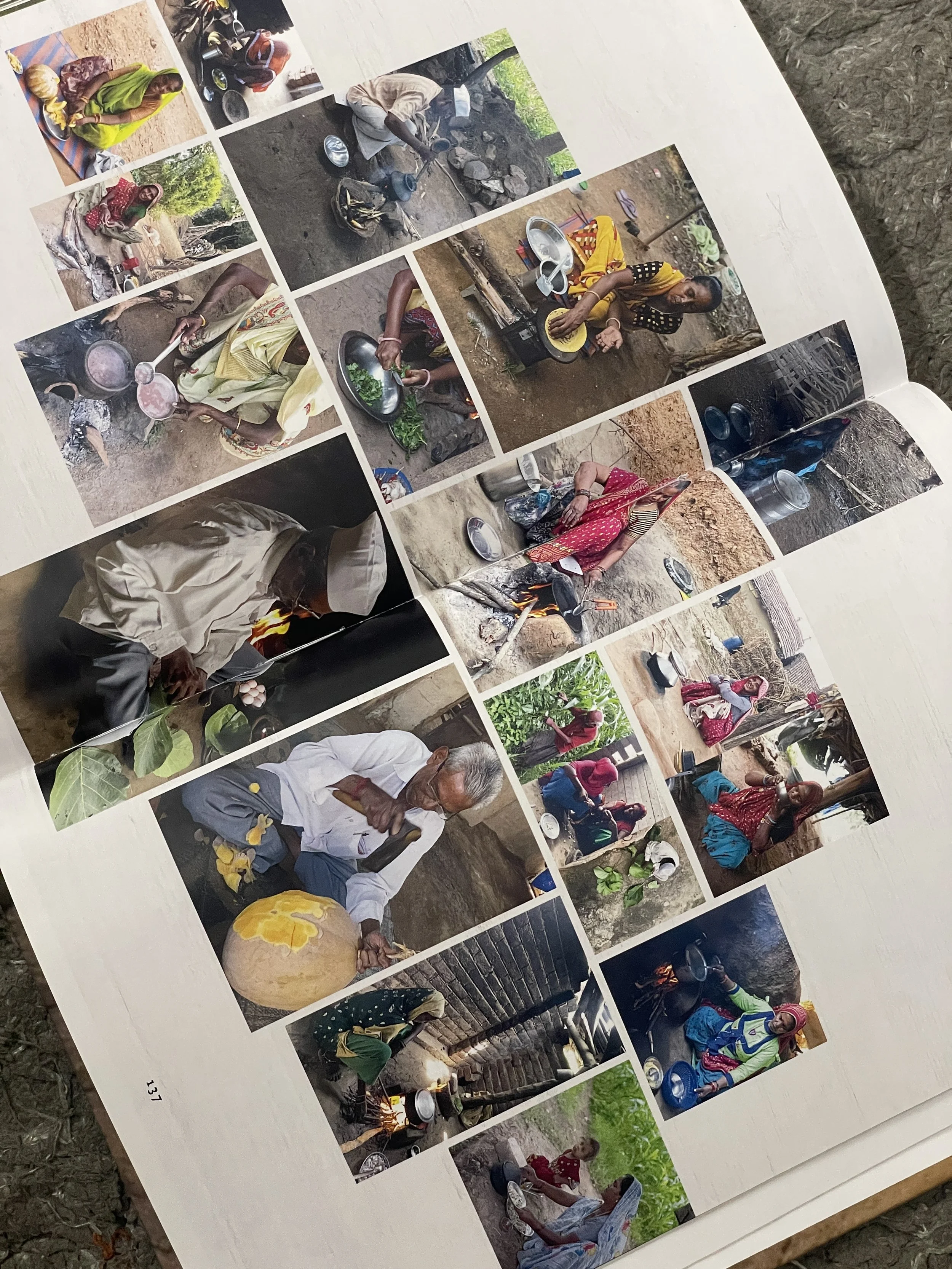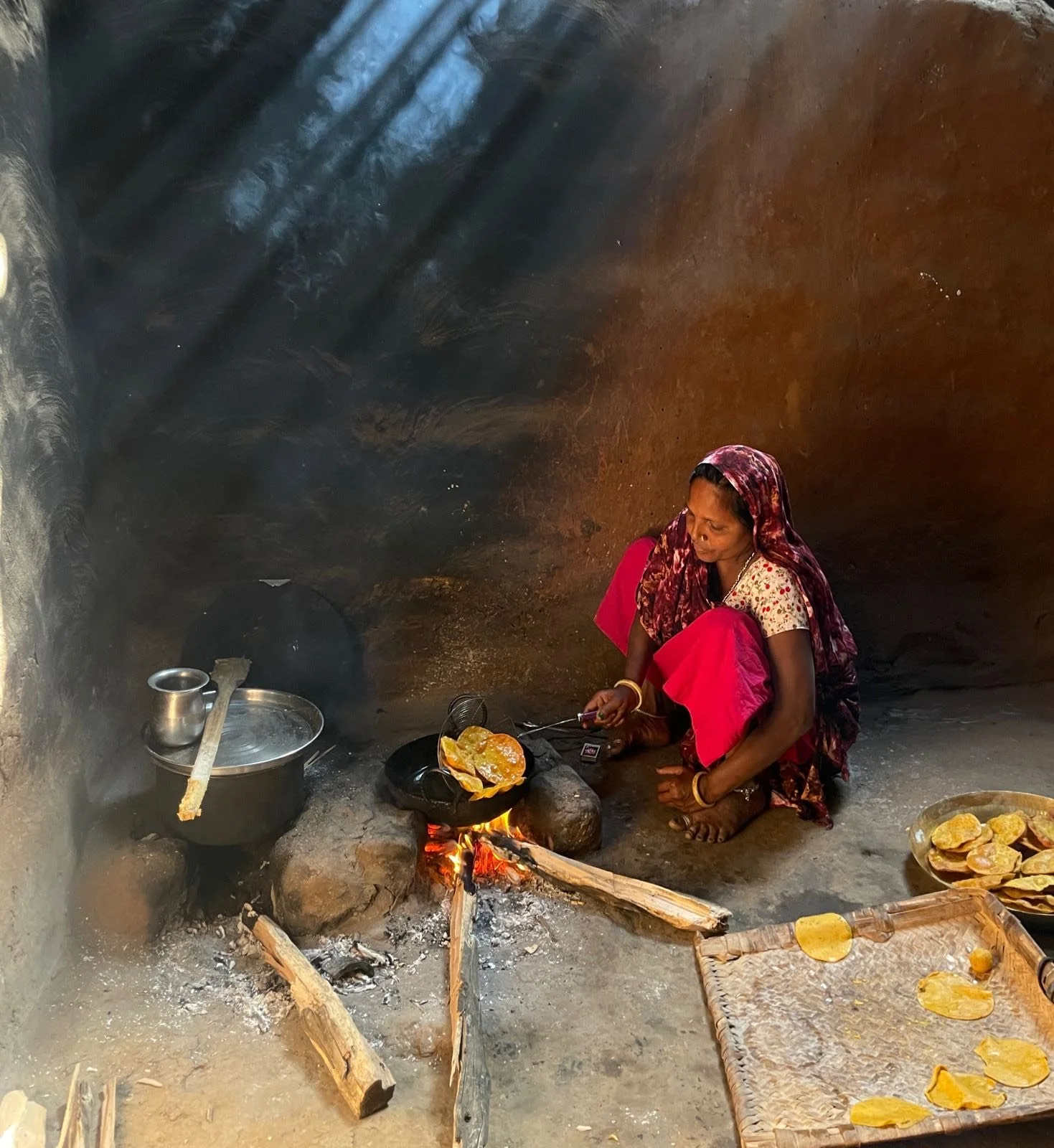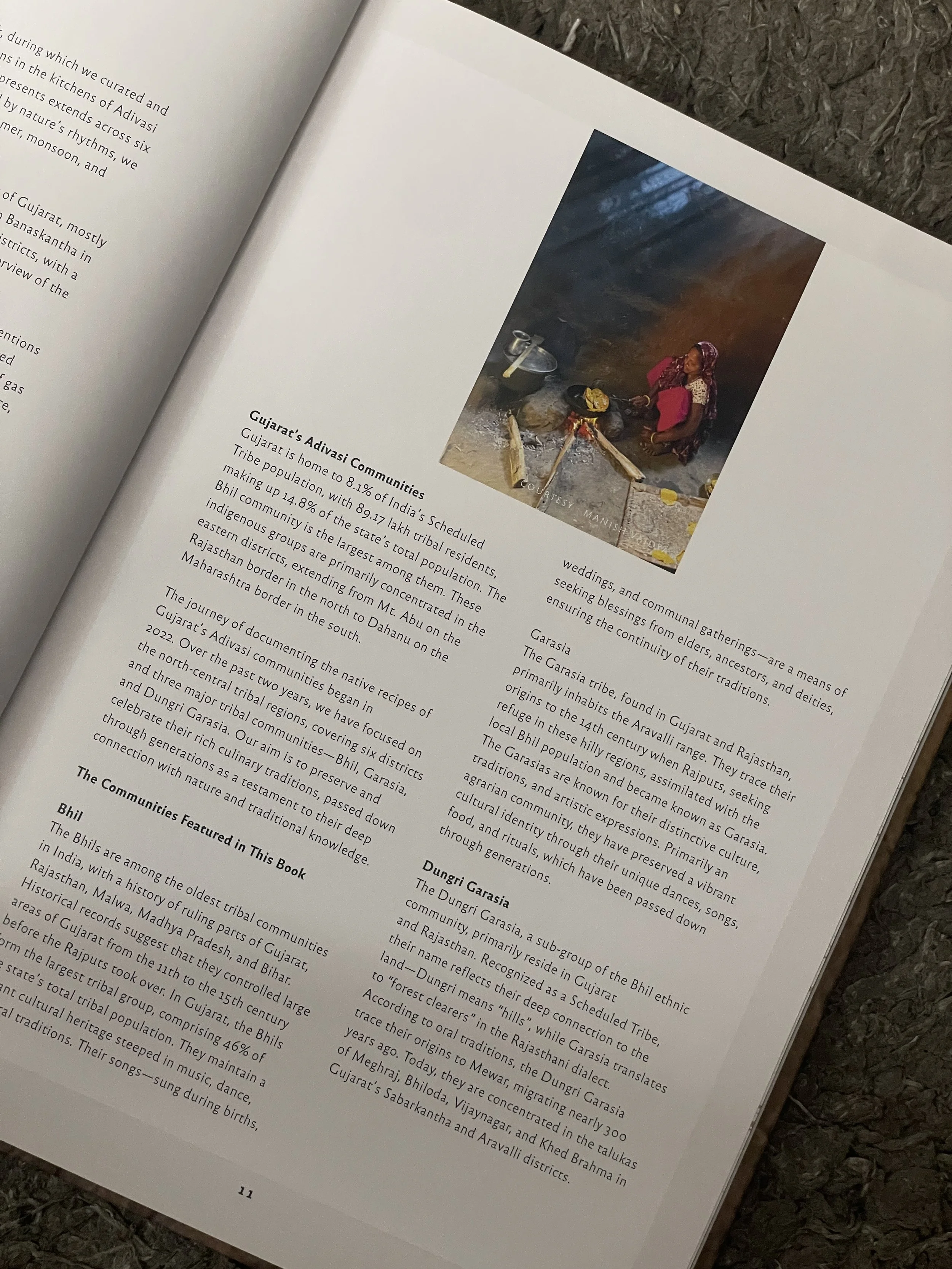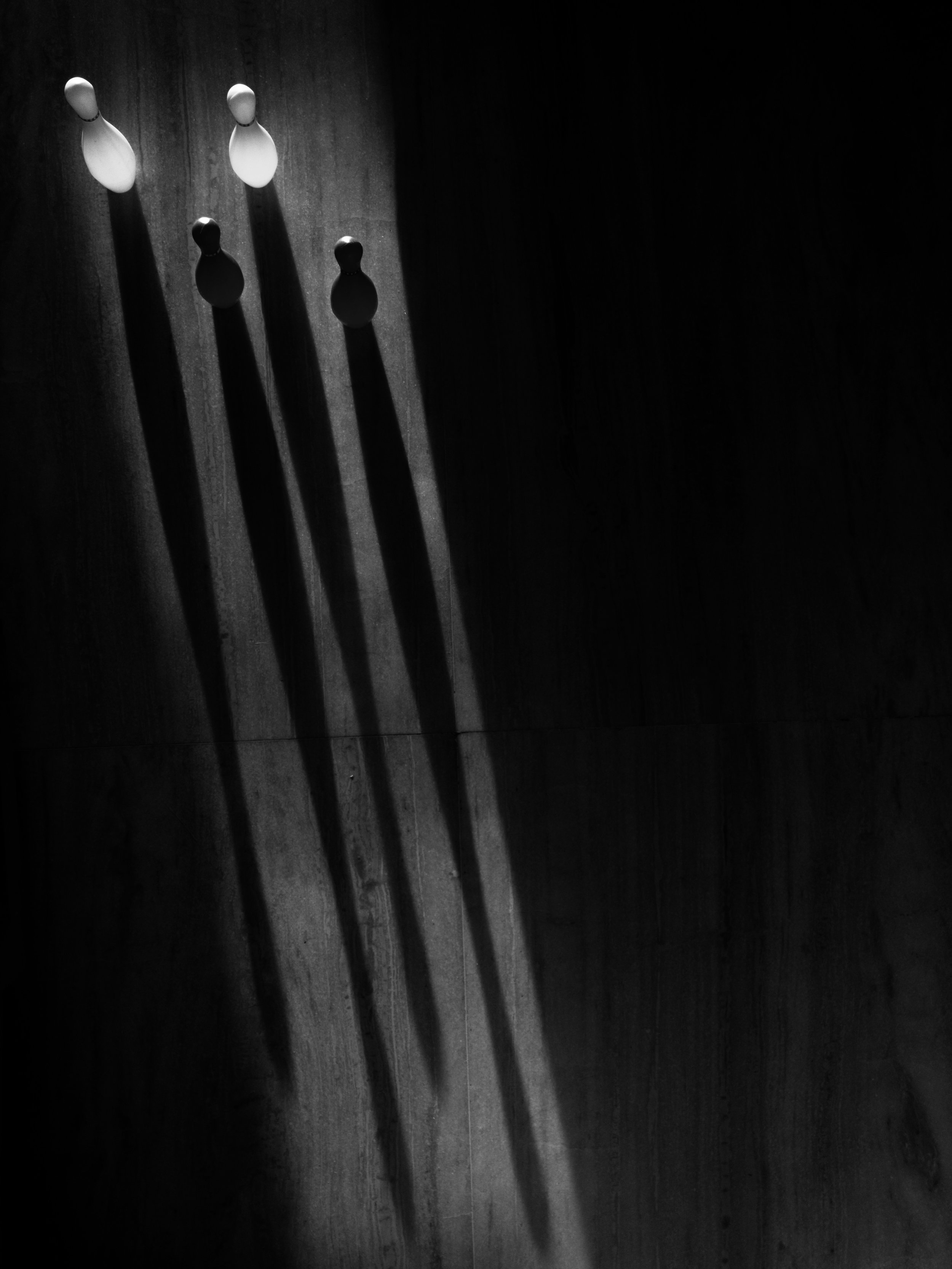Food stories from the heartland of Gujarat, where ancient culinary traditions flourish amidst the simplicity of rural life.
Sheetal: Manish this project is a huge responsibility and I hope I can do justice to this vast pool of indigenous knowledge these adivasi communities have shared so generously, documenting for a book can be very overwhelming at times.
Me: As a fellow creative professional, I am really excited about your project.
Sheetal: So am I, every day is a new learning experience. There are so many regional cuisines waiting to be discovered. Some of the ingredients are unknown to me. Did you know that the flowers and leaves described as edible are a huge part of the traditional diet even today?
Me: Wow, I had no idea. I feel I know so little about my own roots and the state that I come from. And it is so amazing that you have decided to document it. But tell me, who is documenting your journey?
Sheetal: No one.
Me: Let me do that if you are okay.
Sheetal: Are you sure? I would be delighted if you can document my journey because I appreciate your sensibilities as a photographer, but it’s a lot of work. It is also a bit different from the work you have done so far. However, we can do it if you wish to volunteer, and are okay to spend some days in very remote and rural regions.
Me: Your project is so much about celebrating our relationship with the land, the mother nature that feeds us all. That seems like something I can work with.
Sheetal: Okay, can you join us on our next cookout?
It took just 62 seconds for her to open the door. Sheetal was understandably a bit apprehensive, as she usually refrains from allowing anyone to join her on her work trips.
Image Credit for the book above: Aranya
As someone who grew up in a small village in Gujarat — in a home where food came from the earth just outside our door, and every meal echoed the rhythm of the land — from a state that I have left to migrate for career opportunities outside, this journey became more than a project. It was a quiet return to my roots, a homecoming through memory, scent, and soil. A memorable experience that not only allowed me to be part of something meaningful but also allowed me to grow and evolve as a photographer.
A bright sunny day in February, just the onset of spring, takes us into the heartland of Central Gujarat, to a humble village called Limkheda in Dahod district of Gujarat. As we move deeper into the countryside, the temperature continues to rise. The air is thick with the scent of rabi crops and somehow a promise of discovery. I was equal part curious about Sheetal’s subject matter as well as her journey.
‘Personally for me, this journey became more than a project. It was a quiet return to my roots, a homecoming through memory, scent, and soil.’
The ancient culinary traditions flourish here amidst the simplicity of adivasi life. Here, in the kitchens of generations past, Sheetal, in coordination with Aranya, has embarked on a remarkable quest to document the disappearing foodways of Gujarat’s adivasis. But make no mistake, this endeavour is not without its challenges. With each dawn, Sheetal sets out on a new adventure, armed with little more than curiosity and a deep respect for tradition. For Sheetal, it's a labour of love that involves building relationships, earning trust, making hosts feel at ease in their humble homes, blending in quietly, and meticulously recording recipes with precise measurements — using the tools she always carries to ensure they can be seamlessly replicated in an urban kitchen. Most importantly, doing all this while respecting a different way of life.
First up, a ripe pumpkin has been harvested in one of the homes and we might get to see them prepare a delicacy Koda ni Kheer — pumpkin and rice pudding sweetened using jaggery. The home, a humble brick and mortar structure, is still a work in progress. It is surrounded by rice and mustard fields. The backyard opens into lush agricultural land, from where multiple harvests have been made. We ask for permission and pluck some fresh tuver off the plants. It’s sweet and you can taste the green of the earth on your tongue.
The moment you enter the open kitchen, you’re hit by the soft woody scent of smoke rising from the chulha. A quiet fire crackles under a clay pot . The milk — full-fat, slightly yellowish — simmers gently, a thin film forming on top. The women slice the pumpkin, revealing its bright golden-orange flesh. The men help peel and cube the thick outer shell, breaking it down into soft chunks small enough to melt into the dish. The rice used is small grained desi rice and is slightly starchy, which adds body to the pudding. The boiled and mashed pumpkin go in first, then a handful of rice. Everything is cooked together in that single vessel. No stirring yet. Just watching. The milk reduces slowly, thickens gently. After a while, grated jaggery is added — not beforehand, never before, or the milk will split, we are told. The jaggery foams slightly, melts into the pudding and brings everything together with its warm sweetness. The pot is taken off the fire and allowed to sit. The final touch is a pinch of salt. Yes, salt. “To wake up the sweetness,” she says.
‘I was amazed by the depth of flavor, the layered tastes, and the sheer variety that emerged from these incredibly humble kitchens — where a single clay pot, a few sticks of firewood, and the simplest of recipes came together to create something unforgettable.’
The kheer is served in small steel bowls. It’s creamy and golden, with soft bits of pumpkin that dissolve on your tongue.
The jaggery doesn't overpower; it elevates. You can taste the land, the fire, the milk — all held together in quiet harmony.
Next up is Gunda Mor ni Kadhi (curry made with Indian Glue Berry blossoms). It’s being cooked in a place about 40 minutes away. We rush there. We’re greeted with a warm welcome and are offered tea, to which we can’t say no. We savour the cup.
They invite us into their kitchen. It is in the backyard, at the periphery of the house and the agricultural field where the family works.
The blossoms — plucked fresh that morning — are delicate, pale green with soft, fringed edges. They jokingly say Pakshi pan aa mor maṭe aavta — pahela potana bhaag lai jashe, je jamvu hoy, te jungle thi ave. (The birds come for these shoots too — they’ll take their share first. Whether it’s for birds or humans - what feeds us all still comes from the forest.)
The glueberry blossoms are tender and almost translucent. In the mortar, a paste is being made — red chillies, garlic, a bit of turmeric, and salt. The kadhi base is made from buttermilk, diluted and whisked until smooth. The blossoms are cleaned and tossed into hot oil — not ghee — and are tempered with cumin and mustard seeds. The air smells sharp and nutty. The paste is added, followed by the buttermilk. The pot hisses as it receives the liquid. The flame is turned low, and the kadhi begins to simmer. The blossoms begin to soften and dissolve slightly into the broth, thickening it naturally. It’s tangy, earthy, and unlike anything else.
‘Je jamvu hoy, te jungle thi ave. (Whether it’s for birds or humans, what feeds us all still comes from the forest.)’
They serve it hot, with thick Makai rotla (flat bread made of corn). The kadhi is light, but complex — sour, sweet, and bitter in perfect rhythm. Every bite is like chewing on an edible memory of the forest.
In these kitchens, food isn't just about taste; it's about nutrition, seasonal harvests, and making the most of what the land provides — a deep connection born out of an interdependent relationship with nature. There are no fancy gadgets here, just the steady rhythm of hands working in harmony with nature. And amidst the hustle and bustle of the kitchen, an interesting aspect is the deep involvement of men in every aspect of the culinary process. From tending to the fields to preparing meals with their own hands, they are as much a part of the tradition as anyone else. It's a reminder that in this part of the world, food is a shared experience that brings families together across generations. What sets this cooking apart, is its focus on simplicity and functionality.
When we eat from the land, we don’t just nourish our bodies — we remember who we are. Every seed, every spice, carries the memory of the earth and the wisdom of those who came before us.
But amidst the rigours of her task, there's a sense of joy that comes from witnessing the magic of traditional cooking unfold before her eyes. "Perhaps the greatest challenge that we face, is in preserving a culinary heritage that is at risk of being lost to time" she says. With each recipe documented, Sheetal feels a weight of responsibility to honour the traditions of the past, while embracing the innovations of the present. It's a delicate balance that requires both reverence and adaptability.
As the sun sets on another day of exploration, just another day in Sheetal’s life, and a rare opportunity for me, we are filled with a deep sense of gratitude for the opportunity to be a part of this journey. In the simple act of sharing a meal, this project has forged connections that transcend language and cultural barriers.
May this journey inspire everyone to embrace tradition, celebrate simplicity, savour the flavours of the land, and go back to their roots.
A sneak peak into the book along with some of my images which were published.
You can order your copy of the book Silent Cuisines from https://www.aranyapurefood.com/ using this link https://tinyurl.com/y6xncm4a

